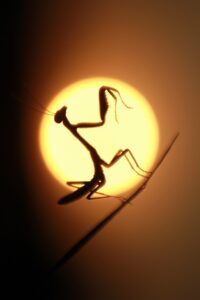[ad_1]
What guides
is not fixed –
a shift
folded in
day’s own turning,
mapped in the drift
of light
across sky-skin.
Each hour
unfastens
what the body
once held true,
and still
it moves –
a wing-thought
reading the rim
of the world
without doubt.
In the small
mind’s engine,
time is a spine
wound in light,
a sun-thread
looped through
field-bends and
magnet-marks.
It does not need
to name
what it knows –
just turn
and hold
to the invisible
line.

This poem is inspired by recent research, which has found that insect brains might calculate the sun’s position using internal clocks and trigonometric circuits.
Many insects rely on the sun to help them navigate, but using the sun as a compass is not as simple as it might seem. Because the sun appears to move across the sky during the day, any creature using it to find direction needs to consider the time of day, the time of year, and where on Earth they are. For a tiny insect, this is a complex challenge – yet many species manage to orient themselves with impressive accuracy, even during long migrations or foraging trips.
This research explores how insects might manage such a feat. It suggests that certain brain cells, known as clock neurons, may keep track of time using regular cycles, a bit like waves. By combining this sense of time with information from their sun compass and other parts of their brain, insects could use simple mathematical rules to work out where they are and which direction to go. The study tested this idea using simulations of insect movement and found that even a basic model – focused on how the sun moves around midday – may be enough for accurate navigation. This work sheds light on the remarkable ways in which animals make sense of space and time, and how biology can solve problems that would normally require complex calculations.
Discover more from The Poetry of Science
Subscribe to get the latest posts sent to your email.
[ad_2]
Source link




